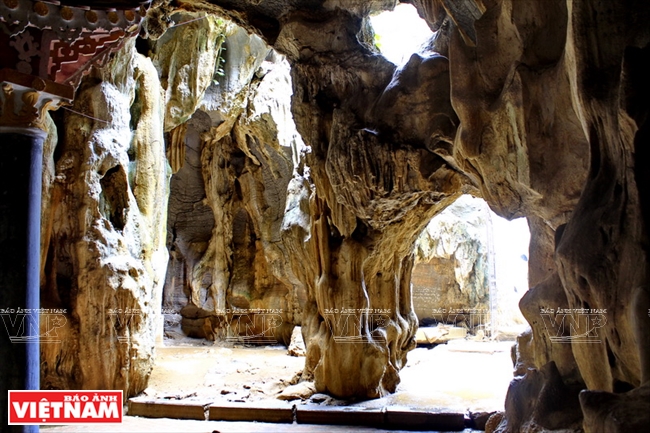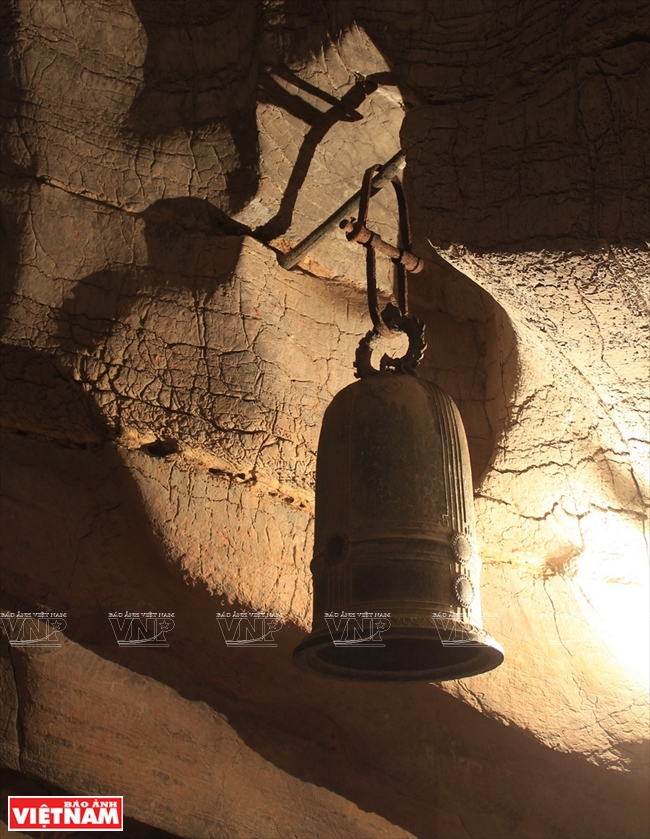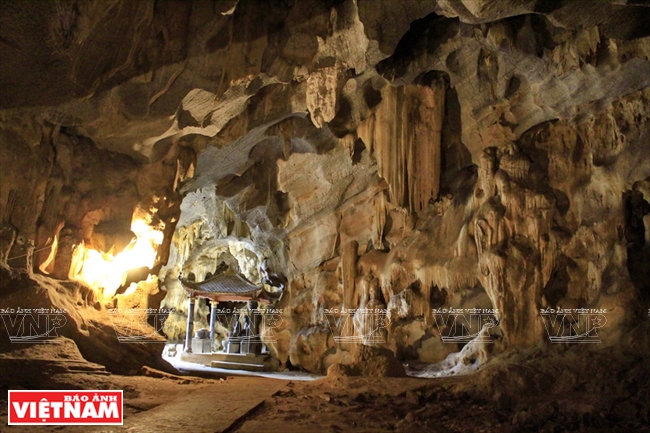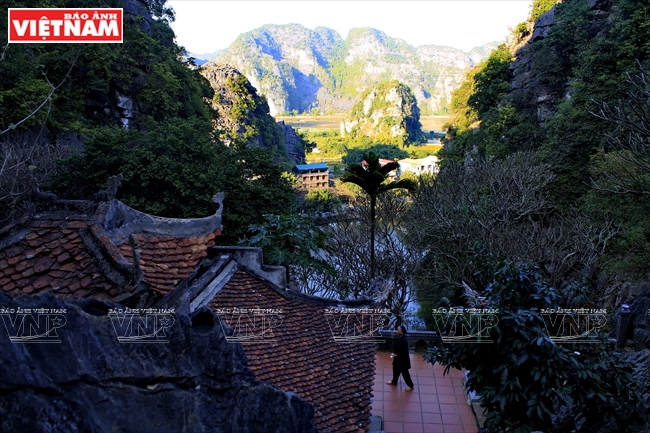|
A stone bridge leading to the gate of Bich Dong pagoda. Bich Dong pagoda consists of the Ha (Lower), the Trung (Middle) and the Thuong (Upper) pagodas.  The Ha pagoda located at the foot of the mountain consists of five compartments. The Ha pagoda worships Buddha. There are towers behind the pagoda. The Trung pagoda is located half way up the mountain. The whole pagoda’s architecture is inside the mountain, excluding its entrance and roof. The Trung pagoda was built in the 15th century to worship Shakyamuni Buddha. In 1775, Nguyen Nghiem (1708-1776) inscribed two Chinese scripts of “Bich Dong” on its roof at the order of landlord Trinh Sam. |
According to Monk Thich Dam Tho, head of the pagoda, Bich Dong was a small pagoda at the peak of the mountain. No one knows exactly when it was built, but it was inscribed on an ancient stele in the Upper pagoda that in the 10th century a woman called La offered money to restore the pagoda.
The pagoda comprises three separateparts, including the Ha (Lower) pagoda, the Trung (the Middle) pagoda and the Thuong (Upper) pagoda.
From the Ha pagoda at the foot of the mountain up 120 steps is the impressive and uniqueTrung pagoda with half of it inside the mountain, rarely seen in others.Monk Thich Dam Tho acknowledged that on the roof of the pagoda, there are ten Chinese golden scripts “Gia Lam than – Dai Hung Bao Dien-Nam Thien To” (lit. all monk ancestors in the southern land from Bich Dong pagoda), showing the pagoda’s significant position in the Buddhist development in Vietnam.
From the Trung pagoda, up about 40 steps is the Toi (Dark) cave where there are hundreds of stalactites and stalagmites in different shapes and sizes.They are named by locals as the old fairy, flying dragon, swimming tortoise and elephants. From the cave, tourists continue climbing up to the Thuong pagoda which is on the highest point. From here, tourists have a panoramic view of the landscape of the world heritage site of Trang An.
| After visiting the three pagodas, tourists can take a boat ride from Thach Bich wharf, 100m from the Upper pagoda, to visit the caves of Thong and Thung Nang, Chua, Ghe, Thung Giua and But. |
For years, Bich Dong has been a popular tourist site for both domestic and foreign tourists. Visiting the place, Marine, a French tourist, said: “I am impressed by the peaceful landscape and the ancient beauty of the pagoda. It is the harmonious combination of the pagoda and magnificent landscape of the world heritage site”.
.
 The entrance of Toi Cave. The space inside Toi Cave.  The ancient bronze bell is hung on the cliff above the cave’s mouth which was cast by monks Tri Kien and Tri The in 1707. |
|
In 1774, Tinh Vuong Trinh Sam visited and named the pagoda Bich Dong. Then, Nguyen Nghiem (1708-1776), father of great poet Nguyen Du, inscribed two Chinese scripts of “Bich Dong” on the stone wall of the Trung pagoda. |





